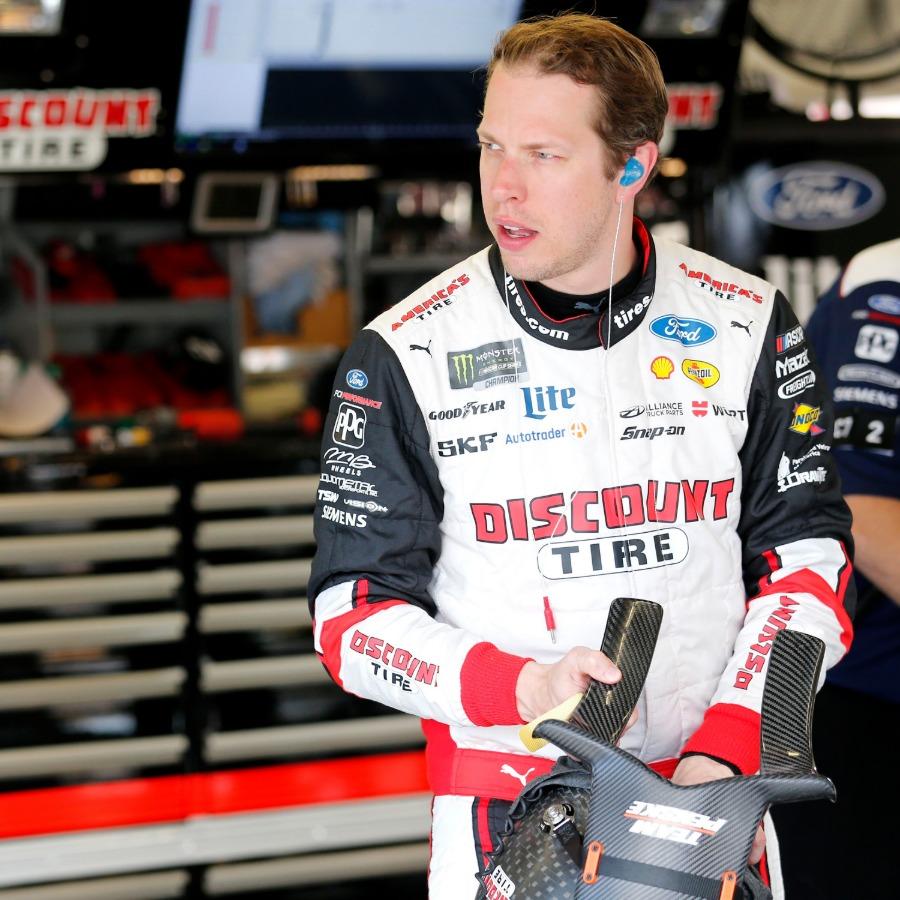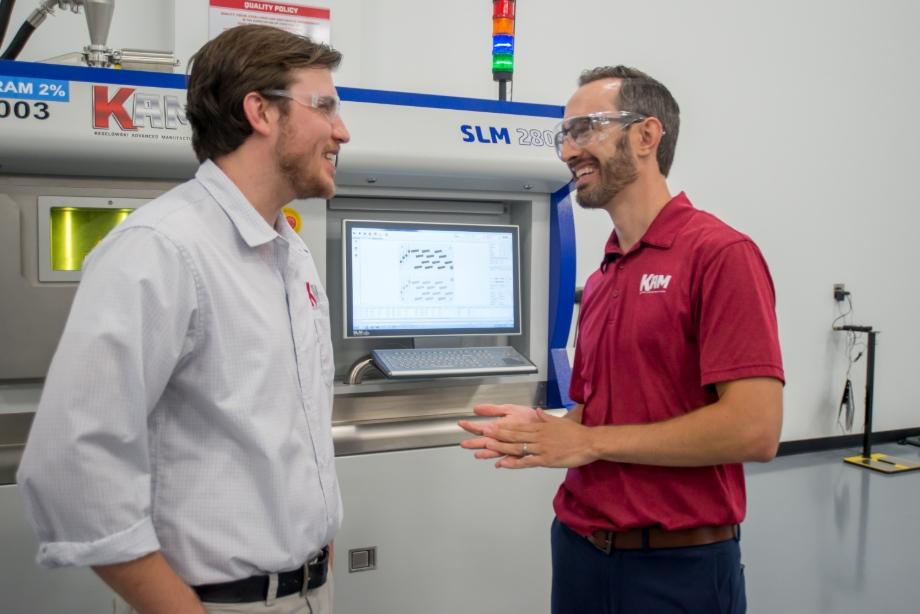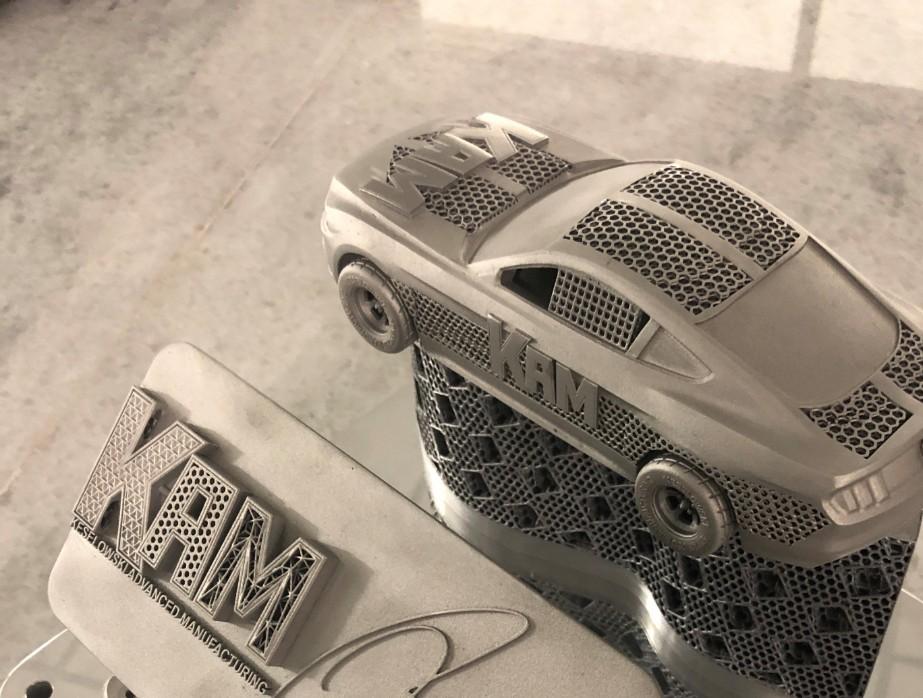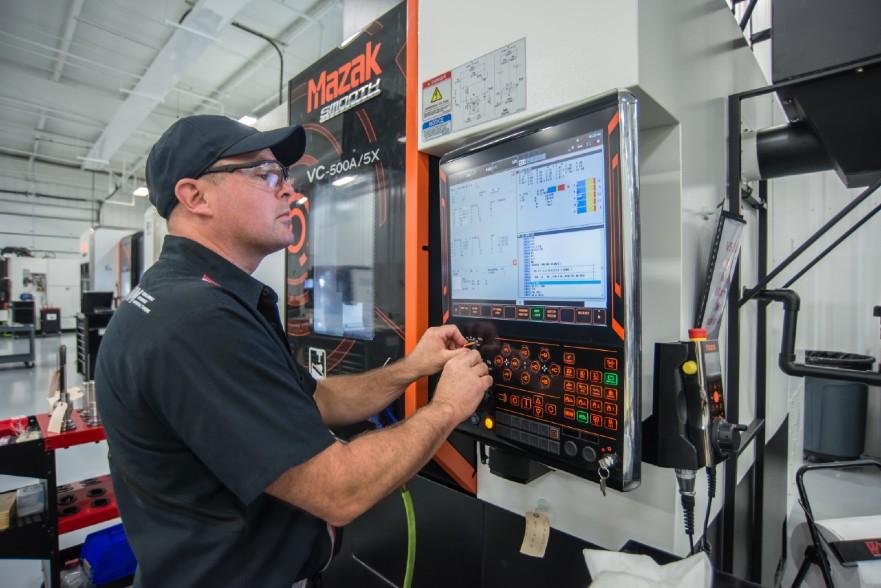Editor-in-Chief
- FMA
- The Fabricator
- FABTECH
- Canadian Metalworking
Our Publications
Categories
- Additive Manufacturing
- Aluminum Welding
- Arc Welding
- Assembly and Joining
- Automation and Robotics
- Bending and Forming
- Consumables
- Cutting and Weld Prep
- Electric Vehicles
- En Español
- Finishing
- Hydroforming
- Laser Cutting
- Laser Welding
- Machining
- Manufacturing Software
- Materials Handling
- Metals/Materials
- Oxyfuel Cutting
- Plasma Cutting
- Power Tools
- Punching and Other Holemaking
- Roll Forming
- Safety
- Sawing
- Shearing
- Shop Management
- Testing and Measuring
- Tube and Pipe Fabrication
- Tube and Pipe Production
- Waterjet Cutting
Industry Directory
Webcasts
Podcasts
FAB 40
Advertise
Subscribe
Account Login
Search
3D printing drives NASCAR champ’s factory
KAM’s combined additive/subtractive manufacturing approach speeds production
- By Don Nelson
- February 18, 2020
- Article
- Additive Manufacturing
The owner and CEO of Keselowski Advanced Manufacturing, NASCAR champion Brad Keselowski, was once quoted as saying that a race car driver is “perfectly positioned to lead this company.”
Asked to elaborate during a recent interview with The Additive Report, he said it’s because a major focus of racing cars is to continually look for ways to incrementally increase speed.
“I do that inside the car and outside the car,” said Keselowski, who opened the 70,000-square-foot KAM facility in Statesville, N.C., with a personal investment exceeding $10 million.
He added that the biggest problem with 3D printing is that it’s too slow. “If you can solve the speed issue, 3D printing … will become what we all think it can be.”
Resolving the issue will require shifting the focus of additive manufacturing from the theoretical to the practical. “My position within our racing companies is to drive new technologies and drive advancements from academia to production,” said Keselowski. “It’s similar conceptually with 3D printing. I look at the technology and I think, ‘I’m in a position to push it forward into real applications that can change the world.’ Hopefully we can do just that.”
Hybrid Approach
Many people in industry define hybrid manufacturing as performing additive and subtractive processes on a part. KAM expands that definition.
“Hybrid for us is really about having an entire vertical chain,” said Keselowski. Among the links of that chain are an engineering department that turns customers’ soft, fuzzy ideas into solid, precision parts that meet specs, as well as operating the latest technology and providing detailed analysis of materials and parts.
KAM’s equipment list, capabilities, and services include:
• Seven metal AM systems—from EOS, SLM, and GE—that print parts from aluminum, titanium, maraging steel, stainless steel, INCONEL® alloy, and other metals.

KAM’s founder and CEO, Brad Keselowski, launched the company in January 2019. A NASCAR champion, he’s been racing professionally for 16 years. KAM
• Six Mazak machine tools, a GF wire EDM, and a high-precision CNC band saw.
• A simulation department capable of FEA; material and topology optimization; fatigue simulation and analysis; modal, impact, and computational fluid dynamics; heat transfer simulation; and multiphysics co-simulation.
• A lab that conducts powder and mechanical analysis.
• Postprocessing services that include surface enhancements, stress-relieving, heat treatment, and finish-coating.
• A complete metrology/QC department that includes a state-of-the-art metallurgical lab and Pinnacle X-Ray Solutions 500-kV CT scanner.
Part of the company’s success with hybrid manufacturing is due to recognizing the advantages and disadvantages additive and subtractive processes offer and understanding the relationship between them, said KAM Additive Engineer Kevin Cwiok. “We understand the two technologies are different, and we understand they’re not going to replace each other. Hybrid is really like making a marriage out of the two.”
Leveraging that relationship is critical to success with hybrid manufacturing because of metal AM’s postprocessing demands. The company’s lead engineer, Mike Mullen, estimated that postprocessing consumes up to 50% of the time spent producing a 3D-printed metal part.
“If I know that I’ve got to put a printed part in a CNC machine for postprocessing, the biggest thing is the fixture,” he said. He compared fixturing a CNC-machined part to fixturing a printed part. The former typically involves little more than securing a block of metal to the machine table. A 3D-printed part, on the other hand, is likelier to have a unique geometry—thanks to the design freedom AM permits—and these often-nonsymmetrical shapes are much more challenging to affix securely to the machine table so as not to impede programmed toolpaths.
“How do I hold a printed part so that our toolpaths can reach the areas of the part that need to be machined?” Mullen said. “So that there’s no chatter?”
KAM employs designers, simulation experts, engineers, and machinists who work together to ideate the best way to postprocess parts.

Mike Mullen (right) is KAM’s lead engineer and Kevin Cwiok is the company’s additive engineer. Brian Lipchik/Additive Report
Cwiok said: “We initially have a review where a machinist might say, ‘OK, I want to hold it this way.’ And we all work together and maybe say, ‘Well, we can add a datum here and you can just machine that off easily.’ It all starts in the design phase.”
Mullen added that the approach “forces all of us—and I use ‘forces’ in a good way—to work together.”
One strategy KAM uses with AM parts is to design them to facilitate their fixturing to a machine tool. A hard-to-hold geometry, for example, might incorporate a dovetail that permits mounting it in a vise. This lets a machinist orient the part any way desired and simply remove the dovetails as the final machining step.
‘Plethora of Software’
KAM describes itself as a “factory of the future.” To earn that moniker requires more than loading a manufacturing plant with the latest, most sophisticated equipment. It also requires digital acumen.
The factory of the future is “very digital,” said Keselowski. “In fact, it’s predominantly run by computer and programming, from the front office to the shop floor.” He added that “3D printing starts with engineering, and engineering starts with simulation.”
KAM upped its simulation game last October by naming Dr. Robin Tuluie its chief scientist. He’s responsible for the company’s CAD simulation strategies and capabilities. In his most recent position, at Bentley Motors, Tuluie served as the company’s director of vehicle technology.
KAM also invests heavily in the latest, most sophisticated software. “We have a plethora of software here,” said Mullen. The lineup includes Siemens NX™, SOLIDWORKS®, Autodesk® Fusion 360®, Rhinoceros® 3D, Autodesk Netfabb® Ultimate, and Materialise® Magics.
The purpose of being software-rich is to speed designing and shipping of parts. If it takes four tries to 3D-print an acceptable part, KAM seeks to cut the number to two or one.
“It’s a cost and time thing when you waste a print or have to start over,” said Mullen. “We’re looking to shorten our learning cycles.”

KAM 3D-printed an aluminum and INCONEL alloy manifold cover (left) for a McLaren automobile. It replaced the original plastic manifold, which burst under turbo pressure. Safa Yousef
Also, because designing for AM is a new area of manufacturing, the number of failed print jobs is relatively high. This reality necessitates “empowering your people,” said Mullen. “Failures are going to happen, and the only way we will succeed as a company is to push the limits. Through failure, a lot of times we figure out what will work.”
Spreading the News
Part of KAM’s mission is to advocate for and teach customers about AM’s benefits.
One “teaching moment” has to do with the finish on 3D-printed parts. Most of the company’s customers come from the machining side of manufacturing and expect to take delivery of smooth, shiny parts having an Ra 16 or better finish. Achieving such a surface on an additively manufactured metal part can significantly raise costs.
Moreover, not every surface on a 3D-printed part needs to glisten and feel silky. Internal channels and mating surfaces need a machine finish, of course, but many noncritical surfaces don’t.
Customers and prospects also must be educated about the pricing differences between printed and machined parts. If KAM can’t offer a lower cost for a 3D-printed part than a comparable machined part, it has to explain why AM may be a better option, said Mullen.
“Our cost may be slightly higher, but maybe we’ve combined two parts into one,” he said, “and now there’s no gasket or weld between two parts, [meaning] you have one less area of failure. We try to explain to customers that sometimes additive is more expensive, but you have to look at the entirety of the part—the life cycle of the part.”
Educating and promoting AM doesn’t mean telling customers it’s the best solution for every part. “If we don’t think additive will work, we tell the customer that point-blank,” said Keselowski.
Some customers accept the assessment while others want to see a printed model anyway, he continued. “We go back and forth on that. I think it’s dangerous to the technology to print parts that aren’t a good fit for printing. It demeans the brand of 3D printing, which is bad for everyone.”
About the Author

Don Nelson
2135 Point Blvd.
Elgin, IL 60123
(815)-227-8248
About the Publication
- Podcasting
- Podcast:
- The Fabricator Podcast
- Published:
- 04/16/2024
- Running Time:
- 63:29
In this episode of The Fabricator Podcast, Caleb Chamberlain, co-founder and CEO of OSH Cut, discusses his company’s...
- Trending Articles
- Industry Events
16th Annual Safety Conference
- April 30 - May 1, 2024
- Elgin,
Pipe and Tube Conference
- May 21 - 22, 2024
- Omaha, NE
World-Class Roll Forming Workshop
- June 5 - 6, 2024
- Louisville, KY
Advanced Laser Application Workshop
- June 25 - 27, 2024
- Novi, MI




























